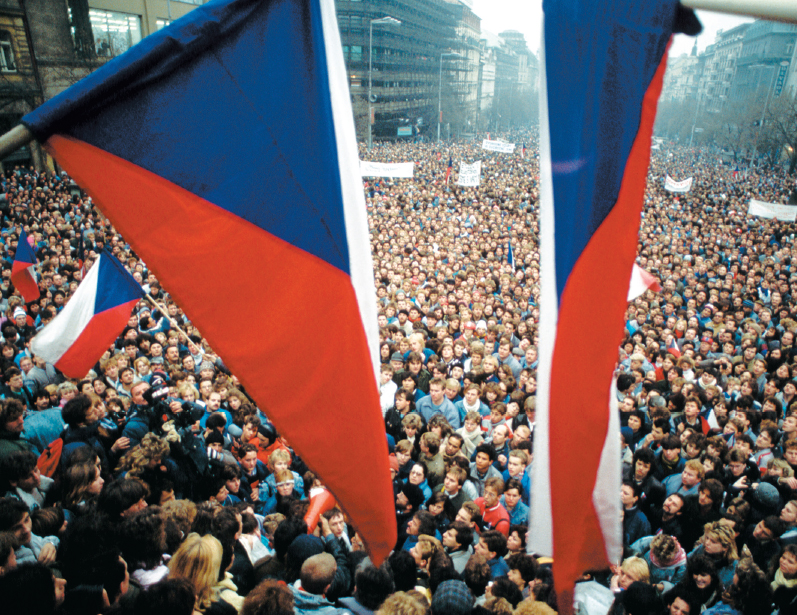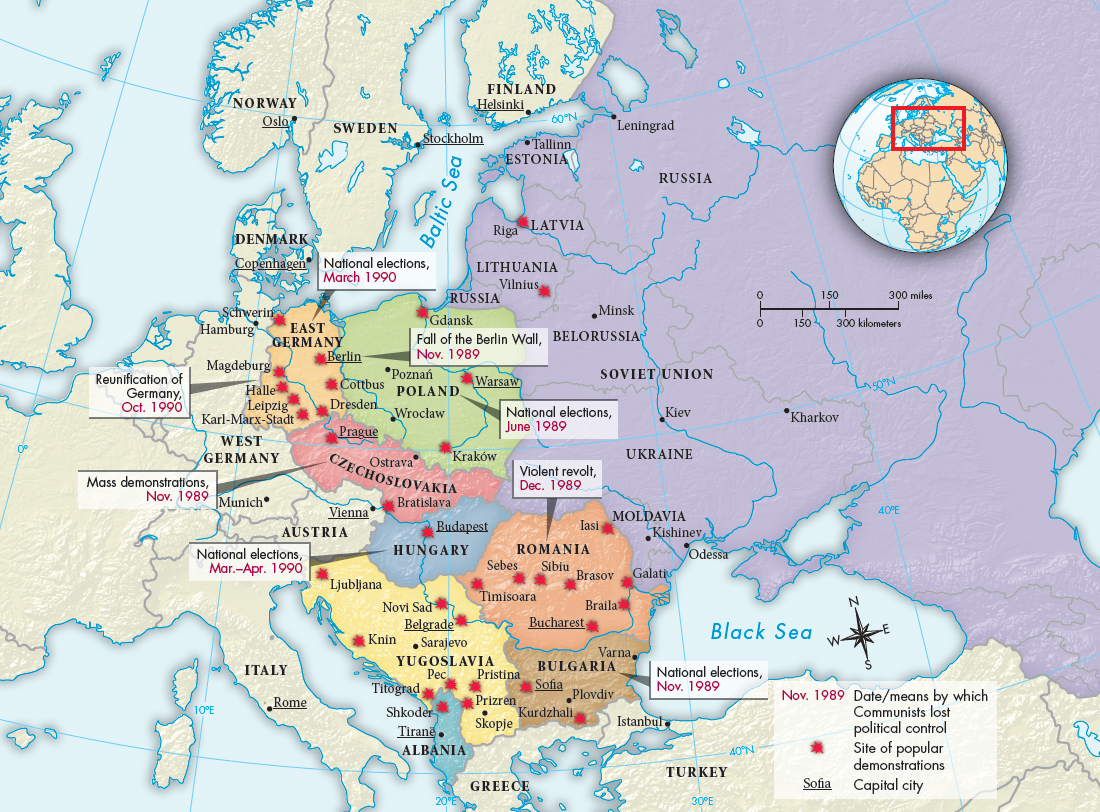Why did revolution sweep through the East Bloc in 1989?

Demonstrators During the Velvet RevolutionHundreds of thousands of Czechoslovakian citizens flooded the streets of Prague daily in peaceful protests after the police savagely beat student demonstrators in mid-
IIN 1989, GORBACHEV’S PLAN TO REFORM COMMUNISM from within snowballed out of control. A series of largely peaceful revolutions swept across eastern Europe, overturning existing Communist regimes (Map 29.2). The revolutions of 1989 had momentous consequences. First, the peoples of the East Bloc gained political freedom. Second, West Germany absorbed its East German rival, and a reunified Germany emerged as the most influential country in Europe. Third, a complicated anticommunist revolution swept through the Soviet Union and the multinational empire broke into a large Russia and fourteen other independent states. The Cold War came to an end, and the United States suddenly stood as the world’s only superpower.

MAP 29.2 Democratic Movements in Eastern Europe, 1989Countries that had been satellites in the orbit of the Soviet Union began to set themselves free in 1989.> MAPPING THE PASTANALYZING THE MAP: Why did the means by which communism was overthrown in the East Bloc vary from country to country? What accounts for the rapid spread of these democratic movements?CONNECTIONS: How did Gorbachev’s reforms in the Soviet Union contribute to the spread of democratic movements in eastern Europe, and how did his actions hasten the end of the Cold War?